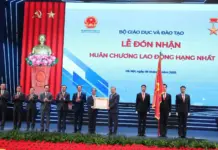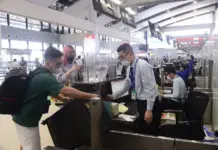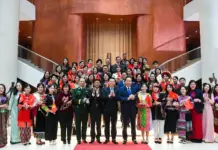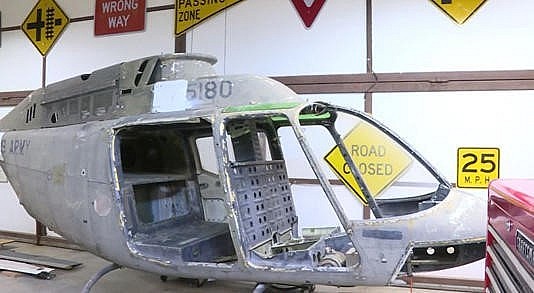 |
| The American Legion in Ellinwood is restoring a Vietnam-era helicopter. © Provided by Wichita-Hutchinson Plus KWCH-DT |
American Legion Post 320, in Ellinwood, found a Vietnam-era helicopter locally, purchasing it from a previous owner in Russell County. An effort is underway to restore the historic chopper.
Vietnam veteran Ken Lebbin started the project in September.
“We are going to restore this aircraft for a static display for the American Legion Post here in Ellinwood,” he said.
The American Legion is working to restore the helicopter to how it was nearly 60 years ago.
“This was used in Vietnam in the mid to late 60s. Needless to say, it needs a little TLC,” Lebbin said.
He said the restoration effort includes completely repainting the helicopter to look as if it’s in service, according to the MSN.
The restoration project will cost nearly $20,000 to complete. If you’d like to contribute to the effort and benefit the American Legion post, you can mail donations to Post 320 Adjutant Dale Kraus, 108 W 11th Street, Ellinwood, KS 67526.
Why did US “helicopter” strategy fail during the Vietnam War?
At first when the “helicopter” tactic was born, it caused some difficulties and losses for the Vietnam’s Liberation Army, but very quickly, the “barefoot with steel-headed” soldiers created many ways to fight and won, especially the Battle of Ap Bac, January 1963.
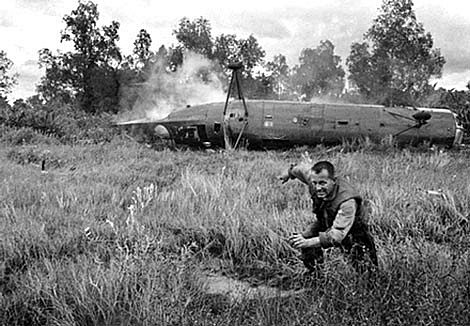 |
| The H21 pilot ran when the plane was shot down in Ap Bac. |
Major Michael Dawson, a veteran helicopter pilot with the 1st Cavalry Division, US, said: “The qualifications and experience of helicopter pilots from the US to South Vietnam always make us concerned, because they are only 20, 21 years old and only 25 hours of “single flight” (meaning flying alone, without a flight instructor), but as a practice flight while in South Vietnam. Every flight could be a combat flight and the last flight. The Viet Cong were always ready to fight against helicopters even when pilots were taking off, in flight or when they were landing…”
To American soldiers, the crackling sound of helicopters was always “the sound of angels’ wings”, but helicopter pilots became a serious problem for the US military advisory mission in South Vietnam MACV. Theoretically, a company of helicopters which the number of pilots were ready to take off reached 90% ideally, but except for the first period of 1962 and 1963, from 1964 onwards, there were always lack of pilots due to casualties in the “helicopter transport”.
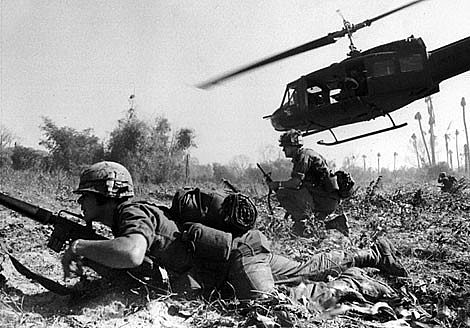 |
| US Soldiers of the 1st Cavalry Division as they were dropped at LZ-Xray. |
Lieutenant Kennmore, a helicopter pilot of the 1st Cavalry Division said: “The flights to the three border areas of Vietnam, Cambodia and Laos were terrifying. At that time, Viet Cong, besides 12.7mm anti-aircraft guns, normally have shoulder-fired missiles. To avoid their fire, we usually have to fly very high, but when we get off, the helicopter didn’t come down as fast as other planes, and so it gets hit. In Pleiku airport, I counted 14 bullet holes on the fuselage, fortunately it wasn’t hit the vital parts.
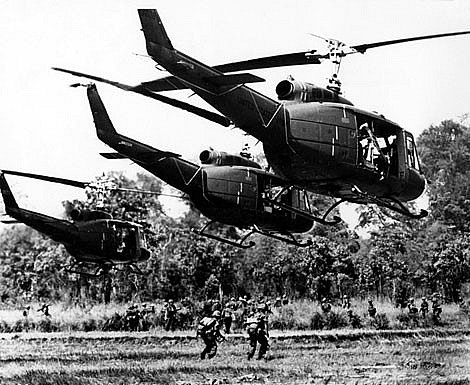 |
| Fear of being shot, many UH pilots forced soldiers to jump from a height of more than 2 meters. |
According to the statistics of the “Vietnam Helicopter Pilots Association”, from 1961 to the end of 1972, there were 7,013 UH-1A, 1B, 1D aircrafts participating in the war, accounting for 59.3% of the total number of aircrafts of American helicopters brought to South Vietnam. Of which there were 3,305, more than half, shot down or destroyed because of the artillery and raids of the Vietnamese Liberation Army on the airfields with a few damaged by technical reasons. And, 2,177 crew members died in a meaningless war for American.

